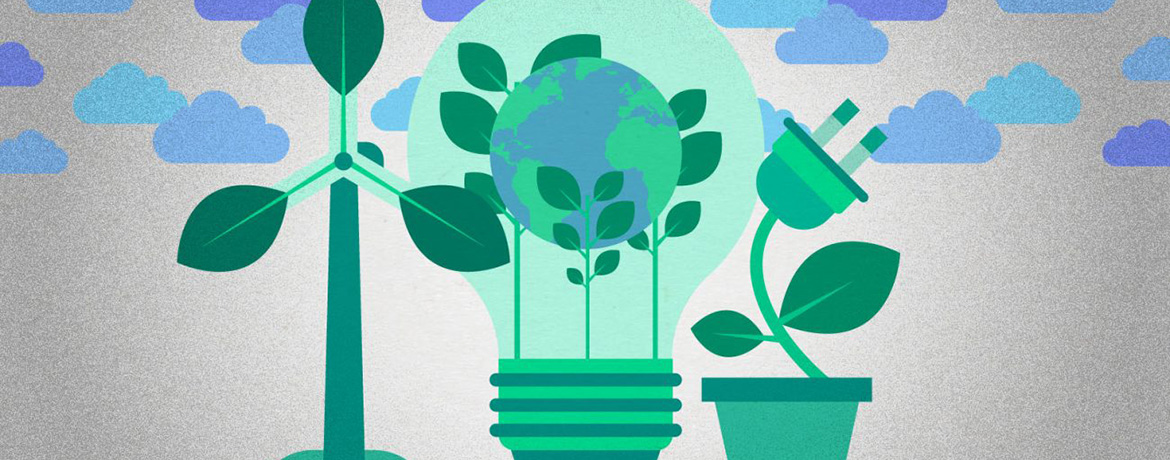
5 Ways Technology and Sustainability Have Gone Hand in Hand
Inspiring individuals around the world are breaking new ground with innovative ideas. These ideas ensure sustainability in an otherwise constantly evolving world. From self-repairing homes, to battery-operated planes, we share our favourite examples of green technology:
Self-Healing Concrete
Water seeps through cracks in concrete infrastructure, which in turn corrodes the steel reinforcements within. Consequently, this causes the infrastructure to begin disintegrating and eventually collapse.
As an answer to this, Professor Henrik Jonkers of the Delft University of Technology developed bio-concrete – concrete that heals its own cracks as they appear.
If put into use, this self-sustaining concrete could potentially save up to billions in construction costs, as well as reduce the significant air, water, and noise pollution arising from construction projects.
Flying Clean
In September 2016, a group of researchers in Germany took to the air in a plane that emits only water vapour.
The four-seater plane, called HY4, is powered only by hydrogen fuel cells and a battery for power boosts during takeoff. If all fuel cells broke down mid-flight, the battery would provide sufficient energy for a safe emergency landing.
“This is the first time that somebody has built an airplane that can carry more than one person and which is driven by hydrogen,” says Andre Thess, director of the Institute of Engineering Thermodynamics at DLR.
This represents a decarbonised alternative to regional air travel. Aviation greenhouse gas emissions have been on the rise, so innovations like the HY4 could form the foundation for cleaner means of air travel.
From Fog to Water
1 in 9 people worldwide have no access to clean drinking water today, and Chile is one of these arid countries facing water scarcity. Despite that, the Peña Blanca community in Chile has been effortlessly sourcing water from air.
Called fog catchers, these nets with tiny openings are strung up at high altitudes. Water droplets from coastal fog are caught in the netting and then accumulated in bigger containers, with no further processing required. The new found water is then used for feeding cattle, irrigating vegetation, and even to make Atrapaneblina beer in the town’s artisanal brewery.
This process is not only more environmentally friendly than desalination, but also far cheaper and easier to maintain.
Bioplastics: Man-Made Yet Natural
In a bid to avert the plastic pollution crisis in his country, Kevin Kumala developed bioplastic from cassava – a cheap vegetable root that is in abundance in Indonesia. Vegetable oil and organic resins were also part of the recipe, making for a “100% bio-based” material.
The bioplastic is ecological; disintegrating in just months in natural environments, and almost instantly in hot water. This could mean more than just less litter – it could also spell the end of hazardous materials floating in the oceans, saving several marine lives.
On Canon’s Front
In accordance with our corporate philosophy of kyosei — living and working together for the common good — Canon makes sincere efforts to engage in social responsibilities, particularly with regards to sustainability and the environment. Laser and toner cartridge recycling programmes, increasing transportation efficiency to reduce CO2 emissions and working with sustainable third party suppliers are some of our efforts towards energy and resource conservation.
We also understand that eco-consciousness starts from people – that’s why Canon Singapore, as well as our sister offices under the Canon Asia Marketing Group, participate in the Earth Hour campaign every year in March. Staff members are also encouraged to participate in this movement in their homes by voluntarily pledging their support. Protecting the environment is a collective effort, and such programmes help to cultivate awareness and sustainable good habits in our employees.
We have lauded technological advancements to today’s world, but the industrial efforts to bring them about have been taxing on the planet. Canon’s corporate philosophy of kyosei – working together for the common good – goes beyond our offices. Working together to find that perfect synergy between technology and the environment could promise us a greener future tomorrow.
For more business solutions and insights, follow Canon Singapore on LinkedIn.
